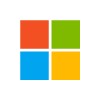Django is a high-level Python web framework that encourages rapid development and clean, pragmatic design. It was designed to help developers take applications from concept to completion as swiftly as possible. Here’s an overview of the Django framework:
Key Features
- Batteries-Included Philosophy:
- Django comes with a variety of tools and features out-of-the-box, including an ORM (Object-Relational Mapping), authentication, URL routing, template engine, and more.
- ORM (Object-Relational Mapping):
- The ORM allows developers to interact with the database using Python code instead of SQL. This abstraction layer makes database operations simpler and more intuitive.
- Admin Interface:
- Django includes a customizable, ready-to-use admin interface that allows for easy management of application data.
- Security:
- Django provides built-in protection against many common security threats, such as SQL injection, cross-site scripting (XSS), cross-site request forgery (CSRF), and clickjacking.
- Scalability:
- Django’s architecture supports scaling up to handle heavy traffic, and its components can be reused across projects, facilitating maintainability and reusability.
- Versatility:
- Django is suitable for a wide range of web applications, from content management systems and blogs to social networks and scientific computing platforms.
Components
- Models:
- Define the structure of your database, including the fields and behaviors you need to store data.
- Views:
- Handle the logic that is executed when a user visits a specific URL. They fetch data from the model and render it using templates.
- Templates:
- Define the structure and layout of the HTML pages that are sent to the user’s browser. They allow for dynamic content generation.
- URLs:
- Define the URL routing system, mapping URL patterns to views.
- Forms:
- Handle form generation, validation, and processing.
- Middleware:
- Components that process requests globally before they reach the view, or process responses before they are sent to the client.
Development Process
- Project and App Structure:
- A Django project can contain multiple apps, each with its own models, views, templates, and other components. This modularity supports code reuse and separation of concerns.
- Settings:
- The settings module contains configuration options for the entire project, such as database settings, installed apps, middleware, and more.
- Migrations:
- Django’s migration system helps manage changes to the database schema over time, allowing for easy database evolution.
Community and Ecosystem
- Large Community:
- Django has a vibrant community that contributes to a rich ecosystem of reusable apps, plugins, and extensions.
- Documentation:
- Django is known for its thorough and well-organized documentation, making it accessible to both beginners and experienced developers.
- Third-Party Packages:
- There is a wide range of third-party packages available to extend Django’s functionality, covering everything from e-commerce to RESTful APIs.
Use Cases
- Content Management Systems (CMS):
- Django’s flexible and powerful features make it ideal for building custom CMSs.
- Social Networks:
- Django’s scalability and built-in user authentication system are well-suited for social networking sites.
- E-commerce Platforms:
- Robust tools for handling databases and user data make Django a good choice for e-commerce solutions.
- Scientific Computing:
- Its ability to handle large datasets and integrate with scientific computing libraries makes Django popular in research and scientific applications.
Django’s emphasis on reusability, rapid development, and a “batteries-included” approach makes it a powerful tool for developers looking to build robust, scalable web applications quickly.



